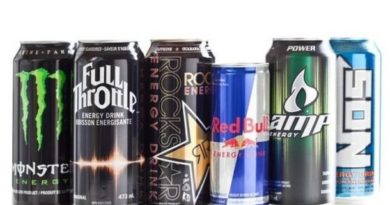Steps to making safe drinking water
Purify water with a filter
Access to clean water is essential for good health, but unfortunately, not all water sources are pure. In numerous instances, water can become contaminated with bacteria, viruses, and other harmful contaminants. Thankfully, there is a simple way to purify water and remove these contaminants: using a filter. Filters work by trapping contaminants in a porous material, allowing only clean water to pass through. This process can effectively remove 99% of harmful contaminants, making it an essential tool for purifying water. Not only is using a filter an easy way to improve the quality of your water, but it can also have a significant impact on your health. By reducing your exposure to harmful contaminants, you can lower your risk of developing serious health problems. Consequently, using a filter is one of the best ways to ensure that you have access to safe and clean water.
Boil water to kill any harmful bacteria or viruses
While boiling water will not remove all contaminants, it is an effective way to kill harmful bacteria or viruses. Boiling water kills microorganisms by causing them to unfold and break down. This makes boiling an essential step in preparing safe drinking water. In addition, boiling water can also be used to disinfect surfaces or clean medical instruments. However, it is important to remember that boiling water will not remove large particles such as dirt or sand. For this reason, it is always best to use filtered or distilled water when possible. But when clean water is not available, boiling is the best way to ensure that your water is safe to drink.
Add chlorine or iodine tablets to disinfect the water
Disinfecting water is critical to ensuring that it is safe to drink. While there are a variety of methods that can be used to disinfect water, adding chlorine or iodine tablets is one of the most effective. These chemicals are powerful disinfectants that can kill a wide range of pathogens, including bacteria, viruses, and protozoa. As a result, using chlorine or iodine tablets is an important step in ensuring that water is safe to drink. Additionally, these chemicals are relatively inexpensive and easy to find, making them a convenient option for disinfecting water.
How to know your water safe?
One of the most important things you can do to ensure the safety of your drinking water is to regularly test it for contaminants. You can buy water testing kits at most hardware stores, or you can have your water professionally tested. If you find that your water is contaminated, there are a few things you can do to make it safe. First, you can install a water filtration system. There are a variety of filtration systems available, and you should choose one that is specifically designed to remove the contaminants from your water. You can also boil your water to kill any bacteria or viruses that may be present. Finally, you can add bleach to your water to disinfect it. When using bleach, be sure to follow the manufacturer’s instructions carefully to avoid making your water unsafe. By taking these steps, you can rest assured that your drinking water is safe.
How to purify water
dirty water is one of the leading causes of disease and death in the world. Every year, millions of people are sickened or killed by drinking contaminated water. While most developed nations have access to clean water, much of the world’s population does not. However, there are ways to purify water, making it safe to drink. One common method is boiling, which kills bacteria and other harmful organisms. Another option is to use a filter, which can remove sediment, bacteria, and viruses. Some filters also use chemicals like chlorine to purify water. Purifying water is essential to preventing disease and ensuring that everyone has access to clean, safe drinking water.
How to filter water
People have been filtering water for centuries. There are many ways to filter water, and each has its own advantages and disadvantages. Some methods, such as boiling or chemical treatment, are effective at killing bacteria and other contaminants. However, these methods can also remove important minerals from the water, making it less healthy to drink. Other methods, such as reverse osmosis or distillation, can remove both harmful contaminants and beneficial minerals. Unfortunately, these methods can be expensive and time-consuming. The best way to filter water depends on the specific situation. For most people, a simple home water filter is the best option. Home water filters come in a variety of sizes and shapes, and they can be used to filter both tap water and private wells. Home filters typically use activated carbon to remove impurities, and they are relatively inexpensive and easy to use. When choosing a home water filter, it is important to read the labels carefully to ensure that it will be effective at removing the contaminants present in your water supply.
How to get rid of bacteria in water
Drinking contaminated water can lead to serious health problems, including dysentery, cholera, and typhoid fever. While boiling water is the most effective way to kill bacteria, it is not always practical. Here are some other ways to get rid of bacteria in water:
-Use a water filter: There are a variety of different water filters on the market that can remove bacteria from water. Look for a filter that is certified by an independent testing agency, such as NSF International or the Water Quality Association.
-Treat with chlorine: Chlorine is a common disinfectant that can kill bacteria. You can purchase chlorine tablets or powder at most hardware stores. Be sure to follow the manufacturer’s instructions when using chlorine to treat your water.
-Let it sit: Letting water stand for at least 24 hours allows bacteria to dissipate into the air. This method is most effective in warm weather and is not recommended if the water is cloudy or contains sediment.
Taking these simple steps will help to ensure that your family has safe, clean drinking water.
Clean water is essential for life, but it’s not always easy to come by. In this blog post, we’ve gone over five ways to make sure your water is safe to drink, whether you’re dealing with contaminated water or just trying to purify your tap water. Keep these tips in mind the next time you need to filter or purify water – and remember, clean water is essential for a healthy life!




